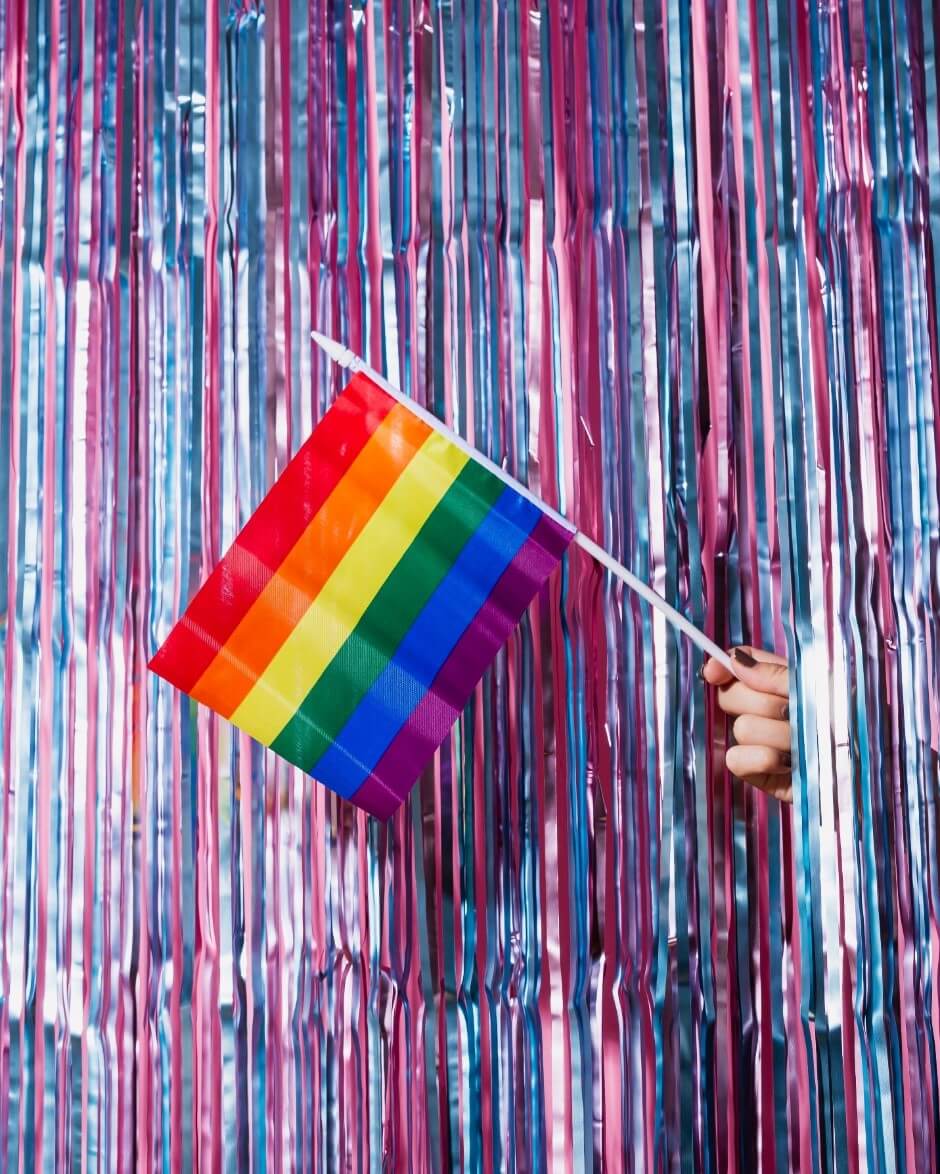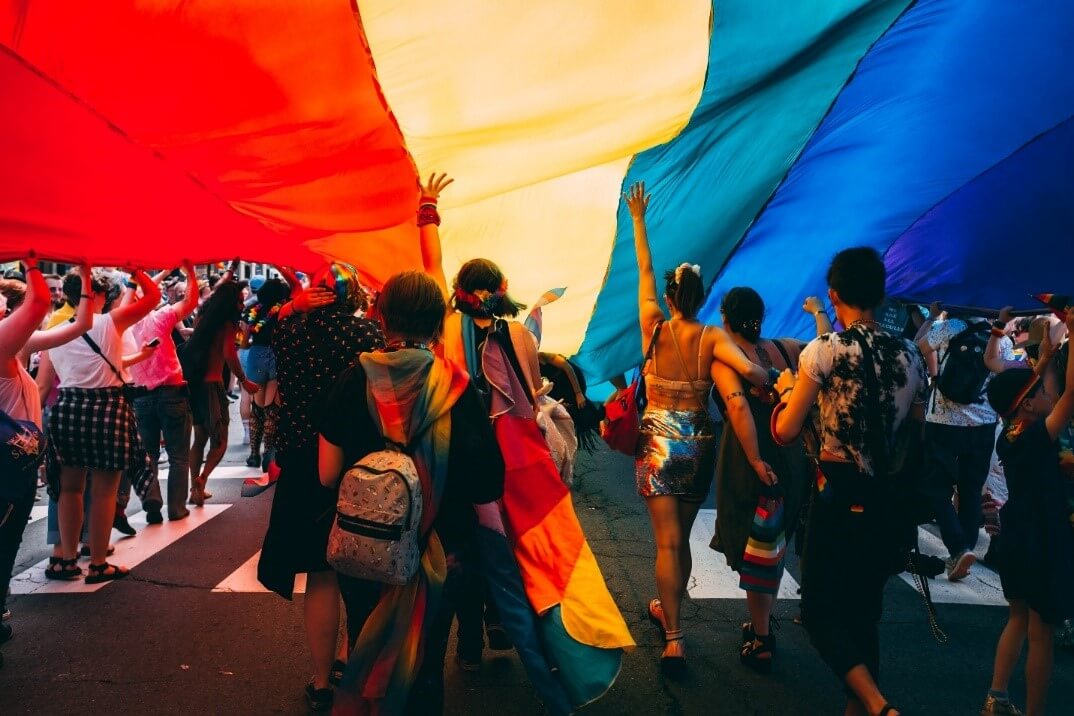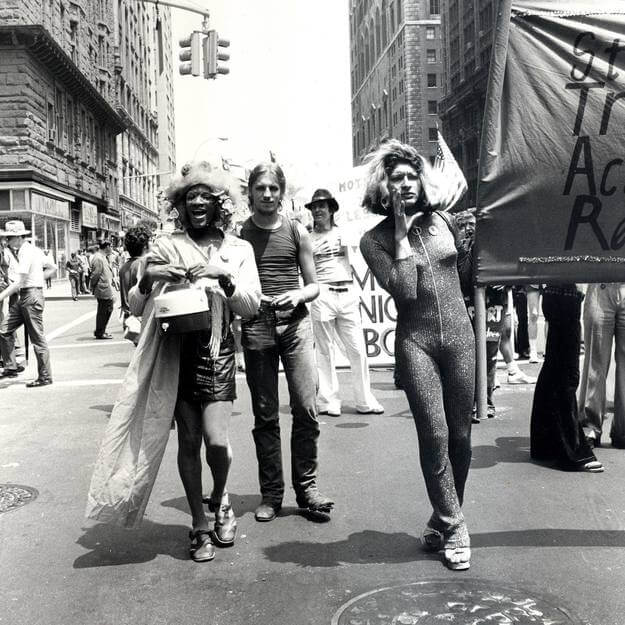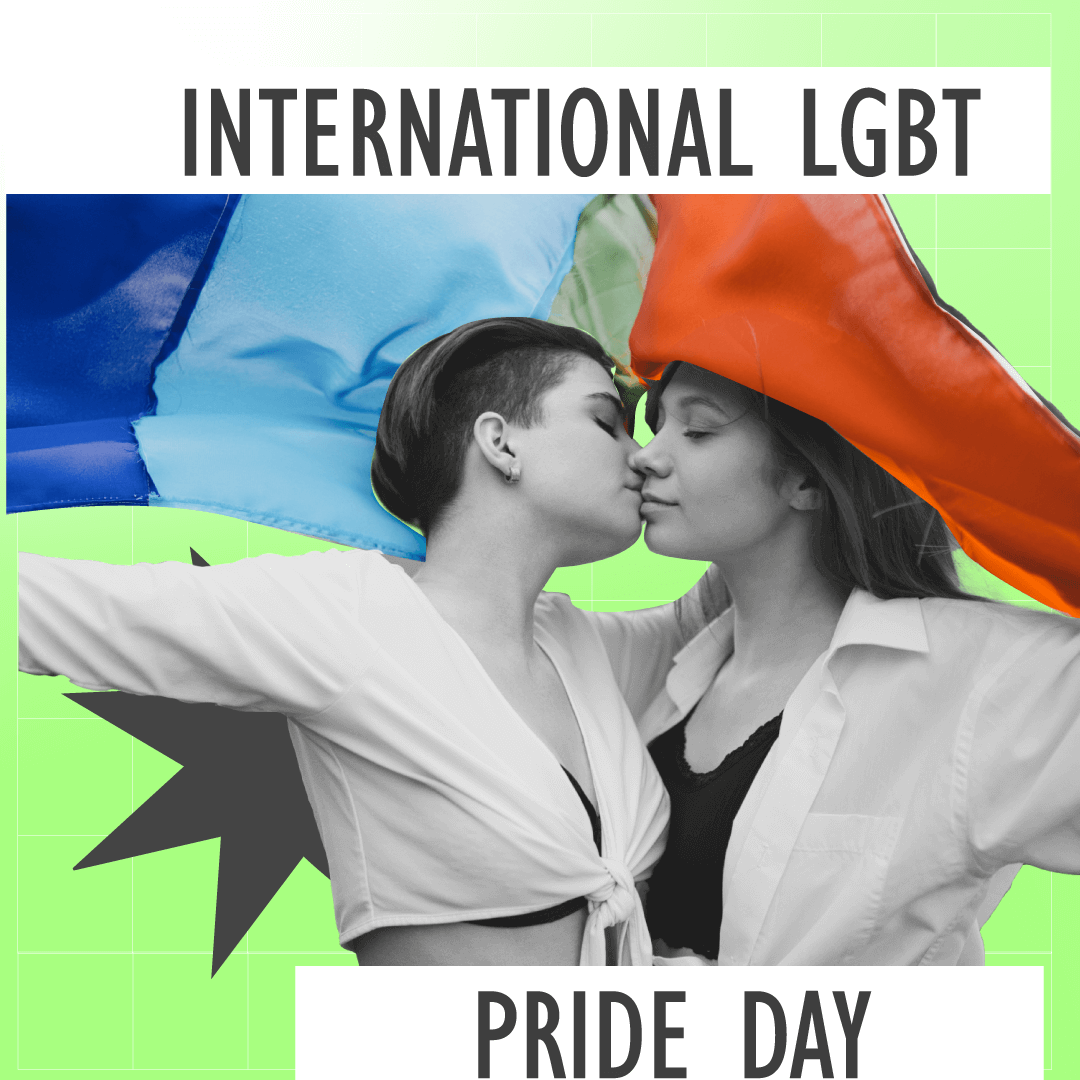Pride Day has come
June 28th is the date when the LGBT+ community comes together to celebrate Pride Day that honours those involved in the Stonewall Riots. Glosa joins the celebration telling you all about its origins and the current demands of the movement.

The Stonewall uprising
In the early morning of June 28th, 1969, the police raided Stonewall, a famous New York bar, that at the time was a regular spot for transsexuals, transvestites, and young sexual workers to come together. The police clashed with over 150 members of LGBT+ community and arrested more than 30. Although this type of action was common in places like Stonewall, the police brutality of that night triggered a series of protests in the following days. This led to the development of gay liberation groups such as the Gay Liberation Front and the Gay Activists Alliance.
These groups fought for freedom, human rights, and dignity for the entire LGBT+ community. In this regard, it is worth noting that at that time, gay, lesbian and transgender people were criminalised and often put in jail or in mental institutions.
A year after the Stonewall riots, several LGBT+ groups protested outside the bar. Over time, the initiative was replicated in other American cities and in other countries. Eventually, commemorations became parades with plenty of glitter, pride flags and joy.
LGBT+ achievements
Gay pride is the response to the discrimination suffered by members of this community based on their sexual orientation (who they are attracted to), their gender identity (how they define themselves, regardless of their biological sex), or their gender expression (how they express their gender through their appearance).
Over the years the community has managed to make demands visible and has achieved important goals. Among them, in 1990, the General Assembly of the World Health Organisation removed homosexuality from the list of mental illnesses. In 2018, it did the same for transsexuality. Moreover, same-sex marriage has been approved in over 30 countries.
However, homophobia and transphobia are still a current issue. In this regard, this day is an opportunity to remember that harassment and criminalisation of LGBT+ people are common practice in many countries, so the fight for equality and respect for sexual diversity must continue.

The local agenda
The main achievements of the LGBT+ community in Argentina are same-sex marriage, the gender identity law, and the trans, transvestite and transgender labour quota law, which was passed last week.
However, the movement continues to seek equal access to rights and opportunities. In this regard, the community fights to make visible the discrimination and aggression that members still suffer, particularly the hate crimes and institutional violence to which trans and transvestite people are subjected. In connection with the matter, the six transvesticides committed in 2020 stand out, as well as the disappearance of Tehuel, the trans man who has not been seen since March, among countless other cases of violence that are not made visible.
In view of this situation, the movement calls for laws that guarantee social inclusion and equal rights for the trans population, as well as the effective implementation of the Law on Sex Education from a gender diversity perspective.

Pride Day in Argentina
The first Pride Parade took place on the 2nd July, 1992 in the city of Buenos Aires. It was organised by the leaders of the Comunidad Homosexual Argentina, Carlos Jáuregui and César Cigliutti. It was attended by more than 300 people, most of whom covered their faces with masks so as not to be recognised while calling for «Freedom, Equality, Diversity».
Over the years, the date of the Pride Parade was moved to November, in order to honour the foundation of «Nuestro Mundo», the first Argentinian gay group, created in November 1967. Today, the Pride Parade is celebrated in several cities across the country and has become not only a way to defend the demands and claims of the community, but also a real festival to celebrate pride.
Día del Orgullo Gay
En junio la comunidad LGBT+ celebra el ‘Mes del Orgullo’, siendo el 28 de la fecha central en la que se conmemora la rebelión de Stonewall. En Glosa te contamos sus orígenes y las demandas actuales del colectivo.
La rebelión de Stonewall
La madrugada del 28 de junio de 1969 estallaron fuertes enfrentamiento entre aproximadamente 150 personas pertenecientes a la comunidad LGBT+ y la policía de Nueva York. Los disturbios ocurrieron en Stonewall, un famoso bar neoyorkino, que en aquel entonces era frecuentando por transexuales, travestis, y jóvenes que se dedicaban al trabajo sexual.
La razzia policial dejó como resultado más de 30 detenidos y detenidas. Según las crónicas de la época, este tipo de accionar policial era común en lugares como Stonewall, sin embargo, la brutalidad policial de esa noche provoca la respuesta por parte de la comunidad que se manifestó en los días subsiguientes. De esta manera surgieron los colectivos conocidos como: Frente de Liberación Gay y la Alianza de Activistas Gay.
Estos grupos luchaban por la libertad, la lucha por los derechos humanos y la dignidad para toda la comunidad LGBT+. En este sentido, vale recordar que en esa época sus miembros no sólo eran discriminados sino también criminalizados y agredidos.
Un año después de los disturbios en Stonewall, varios grupos LGBT+ marcharon en las afueras del bar. Con el tiempo, la iniciativa fue replicándose en distintas partes de Estados Unidos y luego en otros países. Con el tiempo las conmemoraciones evolucionaron en desfiles y fiestas donde abundan el glitter, las banderas del orgullo y la alegría.
Conquistas del colectivo
El orgullo LGBT+ es la respuesta a la discriminación que sufren los miembros de esta comunidad en base a su orientación sexual (por quién siente atracción), su identidad de género (cómo se define, independientemente de su sexo biológico) o su expresión de género (cómo expresa su género al vestirse, peinarse o maquillarse).
A lo largo de los años y a través de la lucha la comunidad ha logrado visibilizar sus demandas y ha obtenido importantes triunfos. Entre ellos, en 1990, la Asamblea General de la Organización Mundial de la Salud (OMS) eliminó a la homosexualidad de la lista de enfermedades mentales. En 2018 hizo lo propio con la transexualidad. Por otro lado, el matrimonio igualitario ha sido aprobado en más de 30 países.
Sin embargo, la homofobia y transfobia continúa siendo una realidad inaceptable. En este sentido, este día es una oportunidad para recordar que el acoso y la criminalización de los miembros de este colectivo son prácticas usuales en muchos países, por lo que la lucha por la igualdad y el respeto a la diversidad sexual debe seguir.
Reivindicaciones locales
Las principales conquistas de la comunidad LGBT+ en Argentina son el matrimonio igualitario, la implementación de la ley de identidad de género, y la recientemente sancionada ley de cupo laboral trans, travesti y transgénero.
Sin embargo, a pesar de la igualdad formal, el colectivo LGBT+ sigue reclamando por iniciativas que se materialicen en un verdadero acceso equitativo a derechos y oportunidades. De esta manera, lucha por visibilizar la discriminación y agresión que siguen padeciendo sus miembros, particularmente los crímenes de odio y violencia institucional del que son objeto las personas trans y travesti. En este sentido, se destacan los 6 travesticidios cometidos en 2020, así como también la desaparición de Tehuel, el varón trans de quien no se sabe nada desde marzo de este año, entre otras innumerables situaciones de violencia que no llegan a visibilizarse.
De esta manera, el colectivo promueve la sanción de leyes que garanticen la inclusión social y los derechos en igualdad de condiciones para la población trans, así como también la aplicación efectiva de la Ley de Educación Sexual Integral con perspectiva de género.
Día del orgullo en Argentina
La primera marcha del orgullo argentina se realizó el 2 de julio de 1992 en la Ciudad de Buenos Aires. Fue organizada por los referentes de la Comunidad Homosexual Argentina, Carlos Jáuregui y César Cigliutti. A la misma asistieron más de 300 personas, la mayoría con los rostros cubiertos con máscaras para no ser reconocidos mientras pedían «Libertad, Igualdad, Diversidad».
Con los años, la fecha de la Marcha del Orgullo se corrió al mes de noviembre, en conmemoración de la creación de “Nuestro Mundo”, la primera agrupación gay argentina, creada en ese mes de 1967. Hoy en día, la marcha del orgullo se convirtió no sólo un espacio para reivindicar las demandas y reclamos de la comunidad sino también en una verdadera para celebrar el orgullo.
